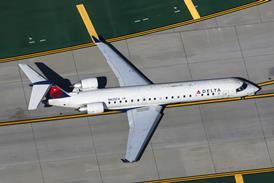GUY NORRIS / PALM SPRINGS, CALIFORNIA
Collaboration with Jeppesen and AOPA is intended to clarify airspace restrictions for pilots post-11 September
The US Federal Aviation Administration is working with Jeppesen and the US Aircraft Owners and Pilots Association (AOPA) to develop graphical representations of temporary flight restrictions (TFRs) in a bid to eliminate the confusion over airspace closures that general aviation pilots have faced since the September 2001 terrorist attacks.
Newly appointed FAA administrator Marion Blakey admitted at the AOPA Expo, which took place in Palm Springs, California, in late October, that its flight service stations (FSS) have not always informed pilots about new TFRs along intended routes and, in some cases, have released inaccurate information. AOPA is pressing for TFR data to be available to all pilots.
Working with Jeppesen, the agency is developing graphical depictions of TFRs to superimpose on aeronautical charts. "We are deploying it to flight service stations and we plan to make it available to the pilot community and AOPA early next year," says Blakey.
AOPA president Phil Boyer says, however, that the real solution lies in making the graphical TFR capability available to all pilots, not just through the FAA stations. "Hope-fully that will happen sooner rather than later," he says, adding that written Notams about the restrictions are difficult to interpret. AOPA has added graphical TFR depictions to its Flight Explorer Personal Edition real-time aircraft tracking service, which tracks all instrument flight rules aircraft in the USA in real time, showing position, origin and destination, altitude, speed and other data. But Boyer is concerned the AOPA system would be liable in the case of any mistake in TFRs, unlike a potential FAA-based system.
Meanwhile, Jeppesen says it is awaiting FAA clearance on already developed software allowing pilots to view TFRs on a website or to adapt existing flight planning systems that will recognise the TFRs and reroute aircraft around them.
Source: Flight International























